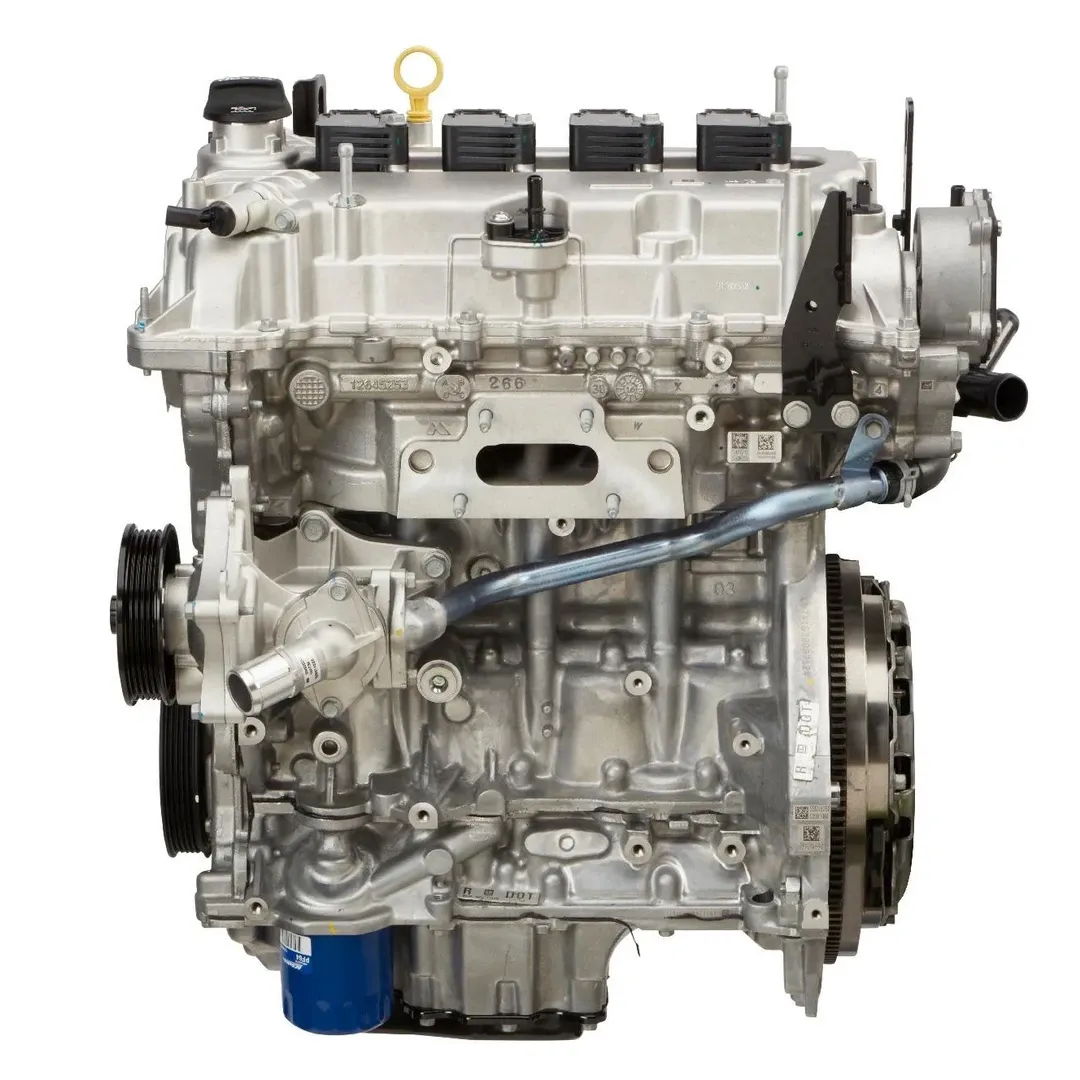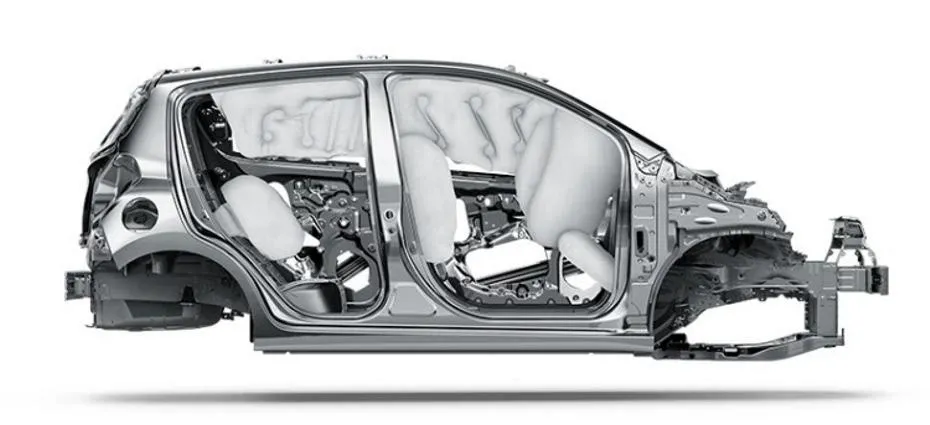Inside the Spark: Why Your Spark is Slow - It's the Engine
This post originally appeared on Reddit.
I've been meaning to look into the performance of MY2016 spark for the past two years, so I finally sat down, went through the documents and used a wonderful site https://www.carspecs.us/calculator/0-60 to finally come to the conclusion.
Before we start, note that I am in no way a car enthusiast, so if you see glaring omissions or errors, please comment, and again this is specific to MY2016+, earlier model years have different engines and, probably, transmissions.
Anyway, the conclusion is:
Your Chevrolet Spark is slow because it has a relatively low power engine and it weighs a lot (for good reasons).
Let's look at the engine first.
 Front of GM LV7 Inline 4 1.4L (1.399 cc) Engine
Front of GM LV7 Inline 4 1.4L (1.399 cc) Engine
Great, very shiny. Now let's look at the specs.
Based on SAE Power Certification Form, GM LV7 as tested in M2xx model (Sparks 2016+) has the following numbers for power output in horses:
| Rated Speed | Rated Output | Measured Speed | Measured Output |
|---|---|---|---|
| 6200 | 98 | 6200 | 97.65 |
The speed is in revolutions per minute, and the cluster shows that number in the tachometer on the left.
 Full fuel gauge, tachometer showing 0x1000 RPM at standstill.
Full fuel gauge, tachometer showing 0x1000 RPM at standstill.
So, in order for the engine to be at peak performance it needs to operate at 6200 RPM, which is almost at the redline.
Redline refers to the maximum engine speed at which an internal combustion engine or traction motor and its components are designed to operate without causing damage to the components themselves or other parts of the engine.
-- Wikipedia
So we are not getting 98hp at all times when driving around. Additionally, the designed specification of 98hp is calculated when engine is not even inside the car, so we'll sustain some power loss by driving alternator which keeps the lights on, AC, which keeps you cool, CVT which attempts to assist engine to run at maximum performance at every wheel speed, CV joints, and heavy rims and tires rotating.
Combining all that gives impression of less than 98hp on the ground. I could not find the numbers for that.
Q: When I am accelerating, I hear the engine roar like a fighter jet, but the car does not match the performance of the engine, isn't that Continuously Variable Transmission (CVT) making it slow?
A: Well yes, but actually no.
While a manual transmission should give you the ability ability to shift gears in a more performant fashion, I consider the difference of half a second on a 10 second run to be negligible (if times at https://autofiles.com/0-60-times/chevrolet/spark/ can be trusted).
Manual transmission weights about ~60 lb (30kg) less than CVT according to https://media.chevrolet.com/media/us/en/chevrolet/vehicles/spark/2016.tab1.html, so it should be slightly faster (provided that the operator is skillful, as somebody who has never learned to drive a stick I can't go into any more details).
I don't have a good standalone picture of Jatco CVT7 installed in Sparks (presumably, JF015e), so here's the bit from Jatco Ltd. Environmental & Social report 2015:
 Jatco CVT7 with parts of housing removed, belt and pulleys are exposed on the right.
Jatco CVT7 with parts of housing removed, belt and pulleys are exposed on the right.
Q: Can Spark accelerate quicker?
A: Not with the current engine.
Given the footprint of Spark, installing a bigger internal combustion engine is out of the question. Spark EV manages to accelerate to 60mph whole 3 seconds faster than the ICE variant, while being ~550 lb (~250 kg) heavier due to the battery pack.
It is possible to use a turbocharger with an engine of similar displacement, https://gmauthority.com/blog/gm/gm-engines/luv/ lists LUJ and LUV engines installed in Cruze, Trax, Sonic, and Buick Encore to produce 138hp, 38% more than the engine installed in the Spark. So they will be faster off the line, but that needs to be engineered.
Q: But why does the engine roar on acceleration?
A: Engine is switched to the highest power output possible while transmission is doing the conversion of the constant engine power into increasing wheel speed.
Q: Why does it sound like it is shifting gears?
A: First of all, there are two gears related to shifting in this CVT:
It normally shifts from low to high gear at about 27 MPH (43.4 km/h) in drive, during takeoff and after coming to a stop.
This is done to allow more torque at low speed to aid in starting from a standstill, and then switching to high gear for regular driving. Spark CVTs are notoriously bad at switching to the low gear if you decelerate too quickly, so that's why sometimes it feels like the car just doesn't move when you step on the gas after abrupt stop. So coast to the stop to feel that sweet low gear torque. Also you may have CVT fluid deterioration that prevents proper clutch/belt engagement - see https://gm-techlink.com/?p=10118, contrary to what the "normal" usage says in the manual, these CVTs are serviceable and will have degraded performance over time if fluid is not changed.
Oh, the sound of shifting a few gears when you go "pedal to the metal"?
Because CVTs have no fixed gears, drivers do not experience the gear-by-gear stepping-up sensation of traditional automatic transmissions -- only a smooth and steady increase in engine revolutions. To an uninitiated driver, the transmission could sound like it is stuck in a single gear.
-- Auto News
So Jatco added simulated gear switch by adjusting pulley ratios in steps on harsh acceleration. I could not find any sources discussing the change in efficiency due to the simulated shifts, so I assume it is negligible.
Q: What weights so much in the car?
A: Everything - top Spark 2LT weighs at 2,312 lb (1048kg), and has a lot of safety equipment, structures to protect the driver and occupants in case of crash.
 Over-inflated Spark 2016
Over-inflated Spark 2016
All the systems that make the car go and stop, all the infotainment and seats. All the windows and that spare tire in the back. It all adds up to a hefty weight.
Having driven with 3 people in the car and a cooler full of stuff in the trunk I was surprised to experience dramatically diminished power during uphill parts of the route and increased stopping distance due to added weight.
Once the car is rolling at the target speed, it is quite good. Please remember that after 50mph the wind resistance becomes an important factor too:
While each vehicle reaches its optimal fuel economy at a different speed (or range of speeds), gas mileage usually decreases rapidly at speeds above 50 mph.
You can assume that each 5 mph you drive over 50 mph is like paying an additional $0.15 per gallon for gas.
Observing the speed limit is also safer.
Even though spark is rated Good in crash tests - IIHS, collision with a bigger vehicle at high speed may not result in a good outcome for the occupants of the smaller car.
So, be safe and enjoy your smooth (albeit slow) acceleration.
See also:
- Things to go wrong in CVT7: https://www.transmissiondigest.com/the-problematic-cvt-7/